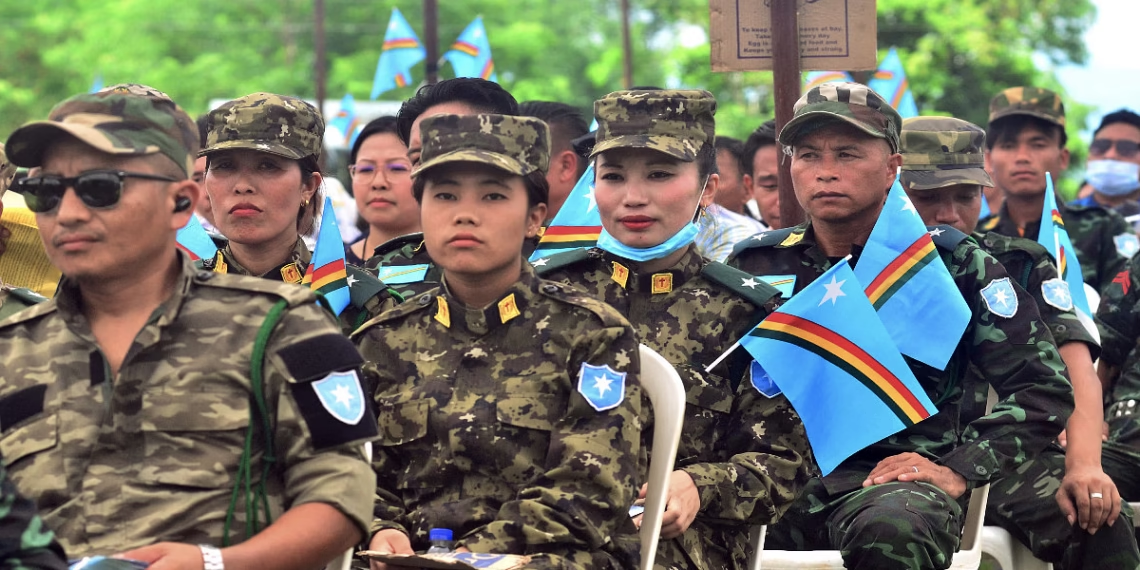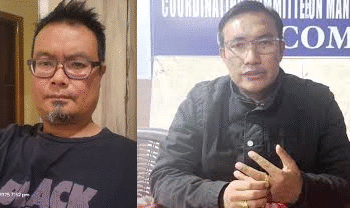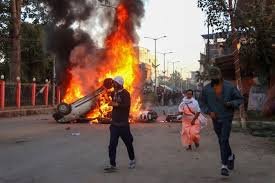August 4, 2025 — Ten years after the much-hyped signing of the Framework Agreement between the Government of India and the NSCN (I-M), a troubling question echoes across Nagaland: What exactly is the NSCN (I-M) defending when the agreement has neither been implemented nor made public?
On the anniversary of the 2015 accord, the National Socialist Council of Nagalim (Isak-Muivah) vowed to “defend the Framework Agreement at any cost” — a statement that strikes many as ironic, if not hollow. The agreement, hailed at the time as a “historic” breakthrough, has remained hidden from the public eye, its terms undisclosed even to elected Naga leaders and legislators.
The signing of the agreement was announced with much fanfare by Prime Minister Narendra Modi on August 3, 2015, calling it a “historic” step towards resolving the Naga political issue. Then Home Minister Rajnath Singh, and senior NSCN leaders were also present.
Only a brief press note and a one-page preamble-like excerpt were shared publicly. This excerpt contained general language about recognizing the “unique history and position” of the Nagas and an agreement to share sovereign powers.
READ: Lest Manipur Forgets Them (Part-2): Two Women, Two Years—Raped. Killed. Betrayed.
The full text of the agreement has never been released to the media, public, or even many elected Naga representatives, including MLAs and MPs.
Successive interlocutors (such as R.N. Ravi and A.K. Mishra) have also refrained from disclosing its contents officially.
This lack of transparency has caused deep frustration among Naga civil society groups, tribal bodies, and political parties.
NSCN-IM Vows to Defend Framework Agreement on 10th Anniversary#NagaSovereignty #FrameworkAgreement #NSCNIM #10YearsOfAccord #NagaPolitics #IndoNagaPeaceTalks https://t.co/fePKq5iwAe
— POWER CORRIDORS (@power_corridors) August 3, 2025
A Phantom Accord
“There is no accord in practice, only in memory,” says a retired bureaucrat who once worked closely on the Naga talks. “You can’t defend something that doesn’t have a shape, a structure, or even a shared understanding.”
It was touted as a roadmap to peace — yet, ten years later, the full text remains classified. There has been no legislative action, no constitutional amendment, and no visible steps to incorporate the core Naga political aspirations the NSCN (I-M) claims it secured.
Even the key stakeholders in Nagaland — including MLAs, MPs, civil society leaders, and tribal bodies — have repeatedly demanded to see the agreement in full. Their calls have gone unanswered.
Still, the NSCN (I-M) insists the Framework Agreement is real, binding, and sacred. In a recent statement, it declared: “We will defend the FA at all costs. It is the cornerstone of Indo-Naga political understanding.”
Critics, however, say this posturing is more about symbolism than substance. “You cannot wage a political battle over an invisible document,” said a political analyst based in Kohima. “Defending the FA has become a matter of pride, not principle. They are defending a myth while the real agreement — if it ever existed in a meaningful form — has been quietly buried by Delhi.”
Betrayal and Paralysis
The NSCN (I-M) accuses the Centre of betraying the spirit of the agreement by holding parallel talks with the Naga National Political Groups (NNPGs), and by refusing to concede on core issues like a separate flag, constitution, and unification of Naga areas.
The Government of India, meanwhile, continues to maintain ambiguity, neither scrapping the agreement nor fully acting on it. This strategic silence has created a political paralysis in the region, with no clarity on what the “solution” to the Naga issue actually entails.
READ: Mizoram Police Seize ₹350 Cr Worth Drugs in Massive Narcotics Bust
Observers warn that this secrecy has come at a price. “You can’t build peace on a confidential foundation,” says a former peace interlocutor. “If you want people to buy into a political solution, you have to make it transparent. Right now, it’s just one side defending a ghost and the other pretending the ghost doesn’t exist.”
As the deadlock continues, what remains clear is that the Framework Agreement — once projected as a beacon of peace — has become a shadowy document that inspires more confusion than clarity.
And the question still stands: What’s there to defend when the public doesn’t even know what’s in it?













